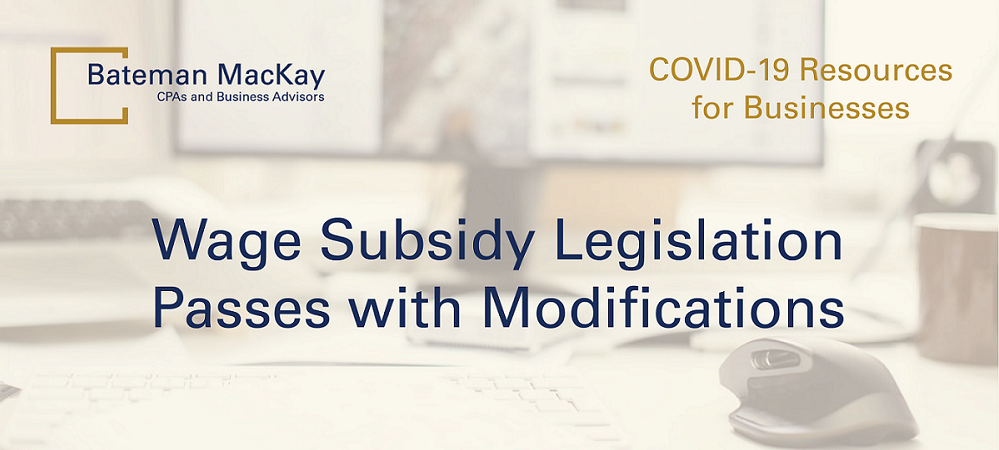
On April 11, the federal government passed the complex, 15 page Canada Emergency Wage Subsidy (CEWS) legislation. The CEWS legislation includes some clarification and significant modifications from the previously announced CEWS program. The CEWS program is in place until June 6, 2020, and the legislation now provides the Federal government with the option to extend the CEWS until September 30, 2020. The CEWS application process is currently in development and can be accessed via the CRA My Business Account or a web application when it is available. On April 21, an application date of April 27th was announced along with a subsidy calculator.
CEWS Eligibility and Computation of Revenue Decline
To be eligible for CEWS, businesses and not-for-profit organizations must apply and show a minimum 15% revenue decline in March and a minimum 30% revenue decline in April and May. This decline can be computed by:
OR
Once an approach is chosen, the employer would have to apply it consistently throughout the program period. Eligible employers can use either a cash or accrual accounting method for the purposes of calculating their CEWS revenue decline and must use the same accounting method for the full duration of the CEWS period.
If an employer is eligible in a particular one month period, they automatically qualify for CEWS for the following CEWS month period. For example, if an employer’s revenues declined by at least 15% in March 2020 when compared to March 2019, they would automatically qualify for CEWS for April 2020 and would then be required to reapply for CEWS for May 2020.
Other CEWS Application and Eligibility Changes
CEWS Amount
The CEWS amount for a given employee on eligible remuneration paid for the period between March 15 and June 6, 2020, is the greater of:
In effect, employers may be eligible for a subsidy of up to 100% of the first 75% of pre-crisis wages or salaries of existing employees.
The pre-crisis remuneration for a given employee is based on the average weekly remuneration paid between January 1 and March 15 inclusively, excluding any seven-day periods in respect of which the employee did not receive remuneration.
Employers are also eligible for a subsidy of up to 75% of salaries and wages paid to new employees.
A special rule applies to employees that do not deal at arm’s length with the employer. The subsidy amount for such employees is limited to the eligible remuneration paid in any pay period between March 15 and June 6, 2020, up to a maximum benefit of the lesser of $847 per week and 75% of the employee’s pre-crisis weekly remuneration.
Other Changes
Sign up for our newsletter and receive tax, accounting, and business advisory resources for your business!